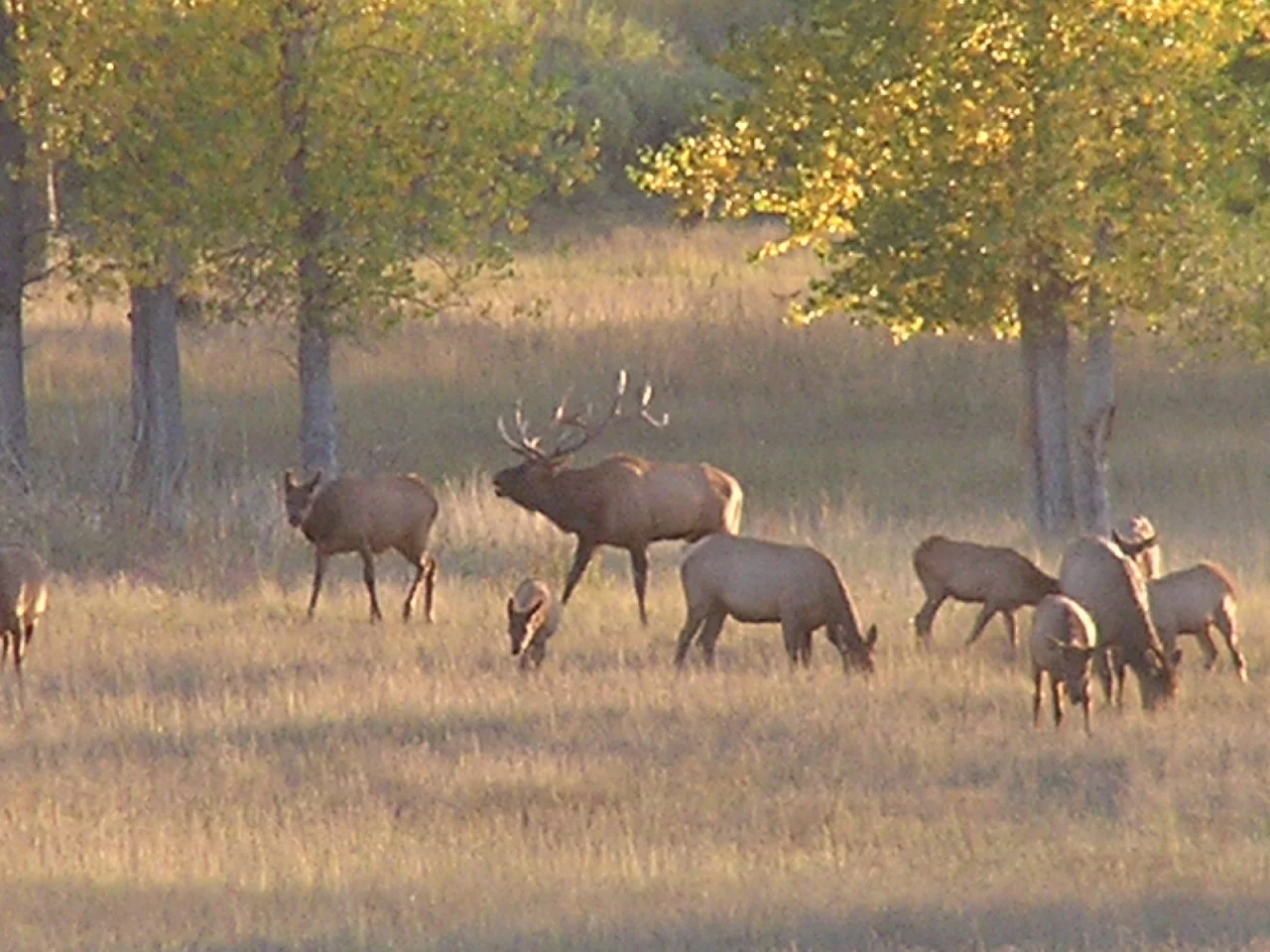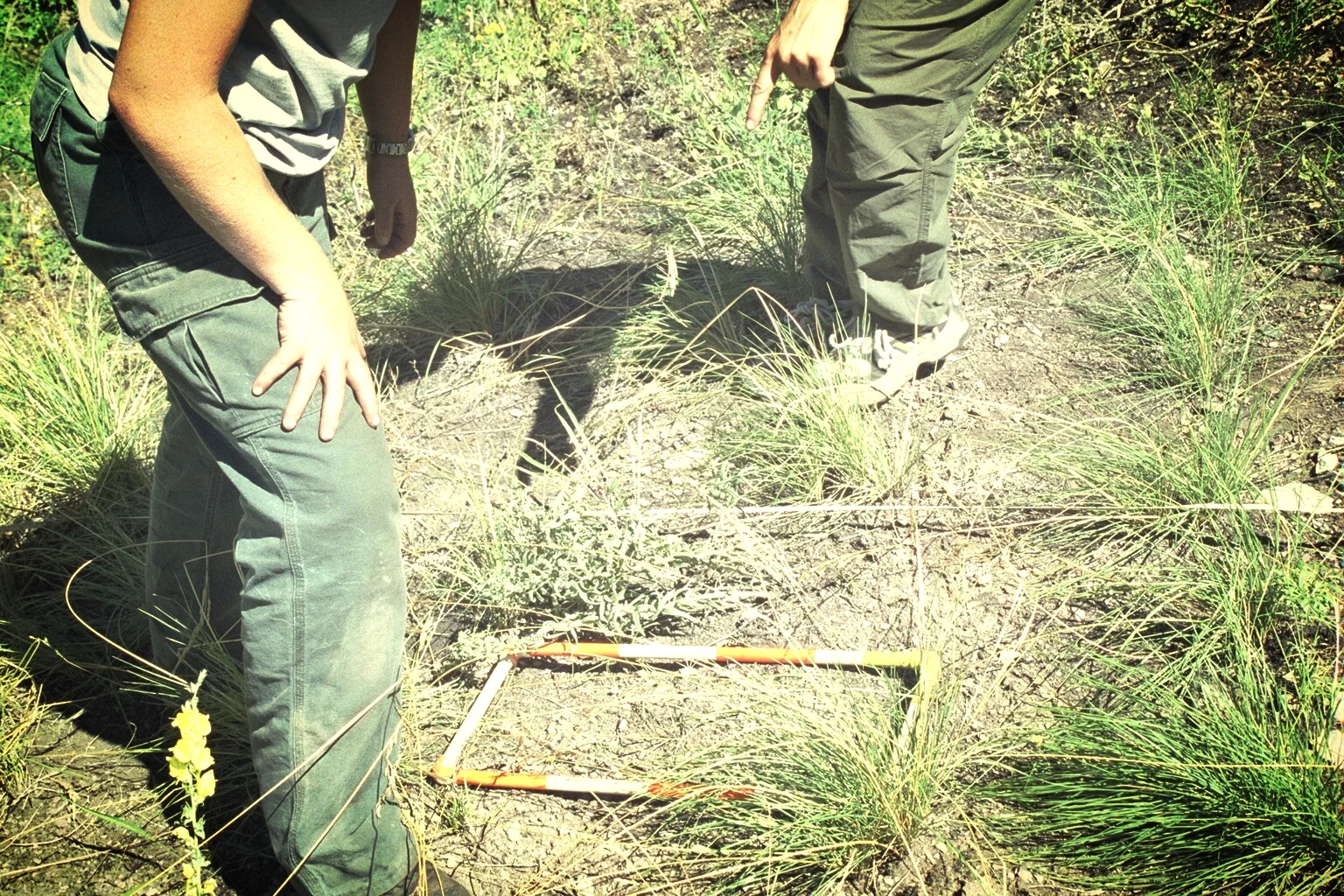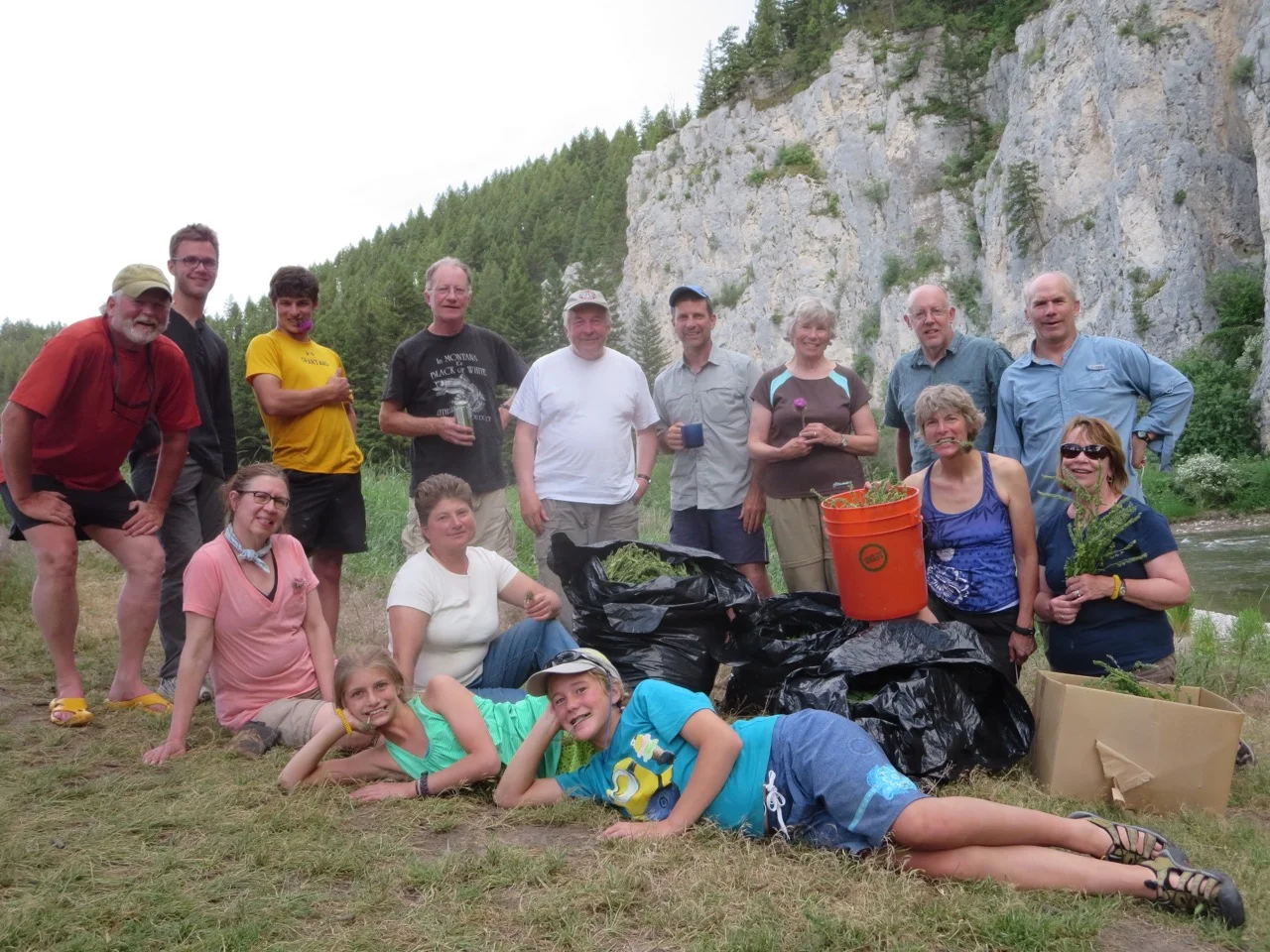With many different private and public landowners along the 60-mile Smith River Corridor, a collaborative approach to weed management is paramount.
A priority for the Smith River Habitat Project was to establish a Cooperative Weed Management Area, where participating landowners agree to work together to develop mutually beneficial strategies towards achieving a common objective—desirable forage and habitat for wildlife and livestock, and a sustainable recreational resource. SRHP facilitates planning and implementation of invasive plant management activities in the Smith River corridor. Management strategies include a variety of on-the-ground management tools including herbicides, insects, hand-pulling, digging, mowing, grazing or burning. Depending on the site conditions and extent of weed populations, objectives may include preventing establishment of new plants, eradicating small populations, or containing or suppressing widespread infestations. Explore the Invasive Plant Management Resource Library to learn more about management methods and strategies.
Current on-the-ground efforts focus on...
- Maintaining weed free campsites and other high-traffic sites, and preventing movement of invasive plants to and from the Smith River Corridor (Clean Campsites Program)
- Suppressing and containing invasive plant populations on adjacent range and wild lands (Healthy Habitat Program)














